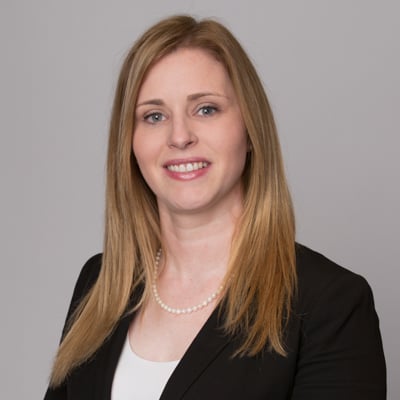Key takeaways
-
If you take the QSBS exclusion, you should hold documentation that specifies information like how long you’ve held your shares and the value of the company at the time the shares were acquired.
-
To increase the QSBS exclusion, gifts and transfers of shares must be made to a taxpayer. This can include an irrevocable trust for a family member, but it has its complications.
-
Employees with options can utilize QSBS, but the option must be exercised to begin the clock for holding purposes and the company must be below $50MM at the time of exercise.
|
There are many ways to take advantage of the exceptional tax benefits of a Qualified Small Business Stock (QSBS) under IRC Section 1202. Here, we outline some of the top questions about how founders, investors and employees of early-stage companies can help minimize their tax obligations.
1. What documentation do I need when I file my taxes and elect to take the QSBS exclusion? From a technical viewpoint, you do not need documentation. If, however, you were audited, you’d want the ability to produce documentation that showed:
In this video Christopher Karachale, Partner at Hanson Bridgett, shares his expert take on required documentation.
2. QSBS applies to US Federal Taxes, but what about state taxes? Each state has their own treatment, although most, such as New York, conform to the federal code. Some states have their own code regarding Section 1202, while some states, such as California, disregard it completely.
3. What are some key considerations for increasing the QSBS exclusion? The gift or transfer of shares must be made to a taxpayer. This can include an irrevocable trust for a family member such as a child or a parent. It is important to get advice around the trusts to make sure they will be able to claim an addition exclusion. Also, gifting earlier is likely more beneficial for estate tax planning, but remember to revisit gifted shares as the final exclusion amount may change. Whether spouses who file tax returns jointly get a single $10M exclusion or $20M exclusion is an open question.
4. What options are available if the company is purchased for cash before the 5-year holding period has been met? If shares have been purchased for cash, you have 60 days from the closing to roll the funds into another QSBS eligible company. It cannot just be a holding company, and it will need to meet QSBS requirements. Provided a taxpayer makes a valid rollover, the QSBS holding period from the first company tacks to the holding period for the new QSBS eligible company, helping the taxpayer get to the 5-year holding period for exclusion benefits. Read more: Getting acquired before your shares are QSBS eligible? Here are three common scenarios.
5. If stock was acquired from a SAFE or convertible note, how are the shares treated? Stock acquired from options, warrants, and convertible notes may still receive qualification under QSBS, but the timing would begin when the actual shares are acquired from the C-Corp. Whether the QSBS holding period for a SAFE starts at the time the SAFE is purchased or at the time the SAFE converts to shares is an open question.
Watch the following video for more on SAFE notes and convertible notes qualifying for QSBS exemptions.
6. Can employees with options utilize QSBS? Yes, however, the option needs to be exercised to begin the clock for holding purposes and the company must be below $50MM at the time of exercise for the shares to qualify. If the shares still need to vest, an 83(b) election will have to have been filed to start the clock.
7. What are key considerations for companies with a significant chunk of cash on their balance sheet? Holding cash will not trip up a company, but when that cash is deployed into investments, it’s much more difficult. The key is to understand and establish how these funds are being used for working capital. At a minimum, companies should prepare a working capital plan to help demonstrate how cash and working capital will be deployed to help sustain or expand the company.
8. Can doing tranched financings cause issues with QSBS? The key here is to focus on the actual date of purchase and the value immediately before and after the purchase. If a funding round has an initial closing of $40M and then a second closing (in the same round) of another $20M, it is unlikely that the shares issued as part of the second closings are QSBS because the company passed the $50M aggregate gross assets test. It is also possible that the IRS would take the position that none of the shares are QSBS because the initial and second closing were part of the same funding round that pushed the company over $50M in aggregate gross assets.
9. What are the most important implications to converting from an LLC to a C-Corp? The first thing to understand is the difference in accounting treatment and how gains/losses are treated. However, if the LLC members convert the company at the appropriate time, they can enjoy the benefit of the 10x exclusion without contributing a significant amount of capital. Note that if you wait too long to convert from an LLC to a C-Corp, you won’t be able to take the QSBS exclusion if the value of the LLC exceeds $50 Million. It is also worth noting that this may create some challenges with equity compensation plans. Read more: Why the timing of an LLC to C-corp conversion may offer significant tax savings
10. If a firm purchases back more than 5% of its shares due to a founder leaving, will this disqualify other shareholders? Although the language is clear that a redemption of 5% or greater can affect the QSBS treatment for certain shareholders, a redemption as a result of termination or retirement is one of the exceptions to the redemption taint rules.
Have a question that’s not listed here? Don’t hesitate to contact us. We’d be happy to work with you to determine the most effective strategy to help minimize your tax obligations. Simply contact an SVB Private Wealth Advisor to get started on your strategies.
|




